Train of thought: artists Langlands & Bell celebrate Frank Pick’s design philosophy
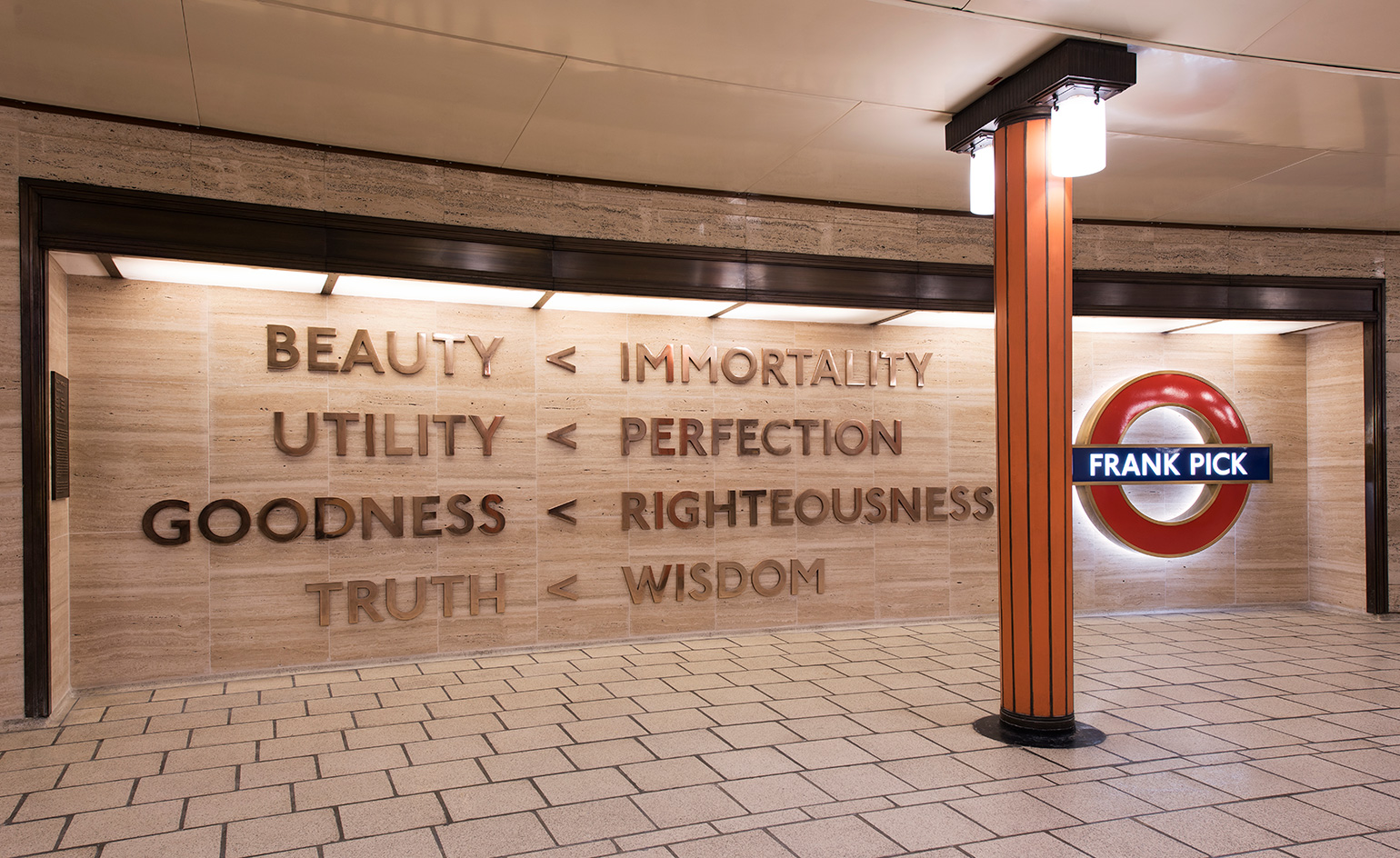
Artists Ben Langlands and Nikki Bell grew up commuting on the Tube. So the London-based duo were well placed to pay homage to London Underground visionary, Frank Pick, 75 years after his death, for an Art on the Underground commission at the newly refurbished Piccadilly Circus station.
'We were given free reign of the Transport Museum archives in Acton,' Langlands explained prior to the public artwork's unveiling. 'We went through Pick's personal papers, and stumbled across a beautiful equation scrawled in the margins. Two columns of four words, each connected by backwards arrows: Beauty, Immortality, Utility, Perfection. Goodness, Righteousness, Truth, Wisdom.'
He adds, 'As soon as we saw this little note, no more than a doodle, we knew that Pick was a true pioneer; somebody who really knew that changing your surroundings can change your life.' Pick's eight, almost forgotten words form the basis of the new commission. Unveiled today, it stands on the arching outer wall of Piccadilly Circus, where astute commuters will remember a bank of now obsolete phone boxes once stood.
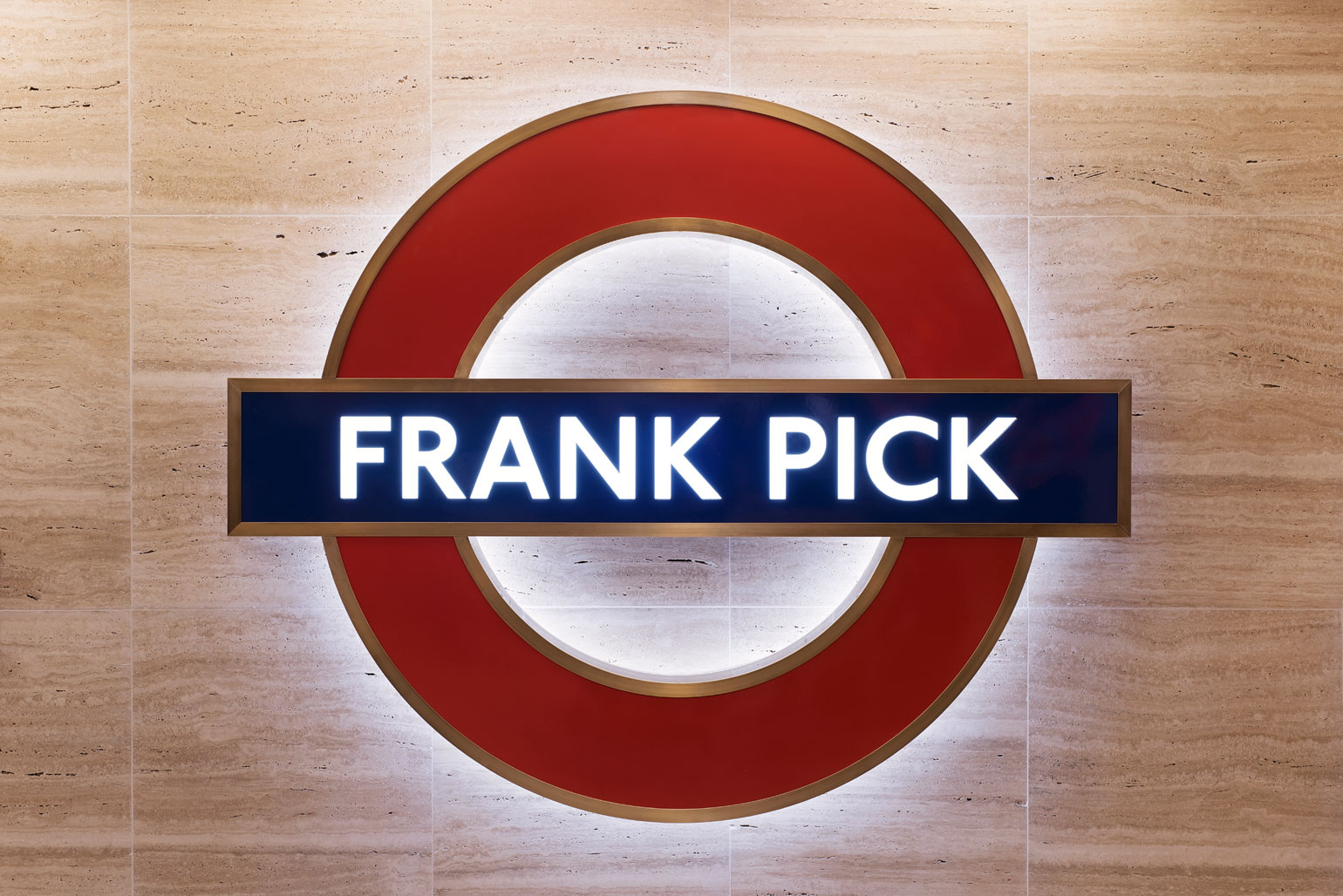
A station roundel has been updated in homage to its designer, Frank Pick.
Pick, a solicitor turned transport administrator, turned design buff, had a knack for knowing how talented creative practitioners (Harry Beck, Edward Johnston, Charles Holden, Man Ray) could best serve the city. Be it through the 1931 tube map design, building new stations, or revolutionising transport branding. Langlands & Bell celebrate this pioneering design acumen by using two renowned symbols Pick was instrumental in bringing to fruition: the Johnstons Typeface which he commissioned in 1913, and the reworked roundel which followed in 1917. The 2m high bronze letters – a new material for Langlands & Bell – are appended by the iconic roundel with 'Frank Pick' proudly stamped inside.
The project has taken about a year, although the wheels were set in motion four years ago, when the former Turner Prize nominees were first approached by the London Transport Museum. 'We could immediately identify with the whole context of the project', Langlands explains. 'Piccadilly Circus is the heart of the city - the site is iconic. But it was Pick's intuitive idealism that was most important to us.' The more the duo researched, the more they uncovered about the man the London Transport Museum is calling 'a forgotten hero'. As with many exceptional people, there was an air of loneliness around him. Langlands explains, 'He was a quiet guy. Socially awkward. Some people found him arrogant – but he was bright and brilliant. With our installation, we're giving Pick his words back.'
Langlands & Bell discovered that Pick had hastily jotted down the eight-word mantra as he waited to deliver a speech as London Underground’s first chief executive, a position he found himself in 'almost by accident', with no formal transport training, and no background in design. Perhaps the hurried scrawling was nothing more than a pre-speech pep talk to himself, never intended to be seen by anyone else. Perhaps it was more than that – a powerful personal philosophy, that we can all learn from on our morning commute, from the man who had the foresight to intertwine London's infrastructure with design.
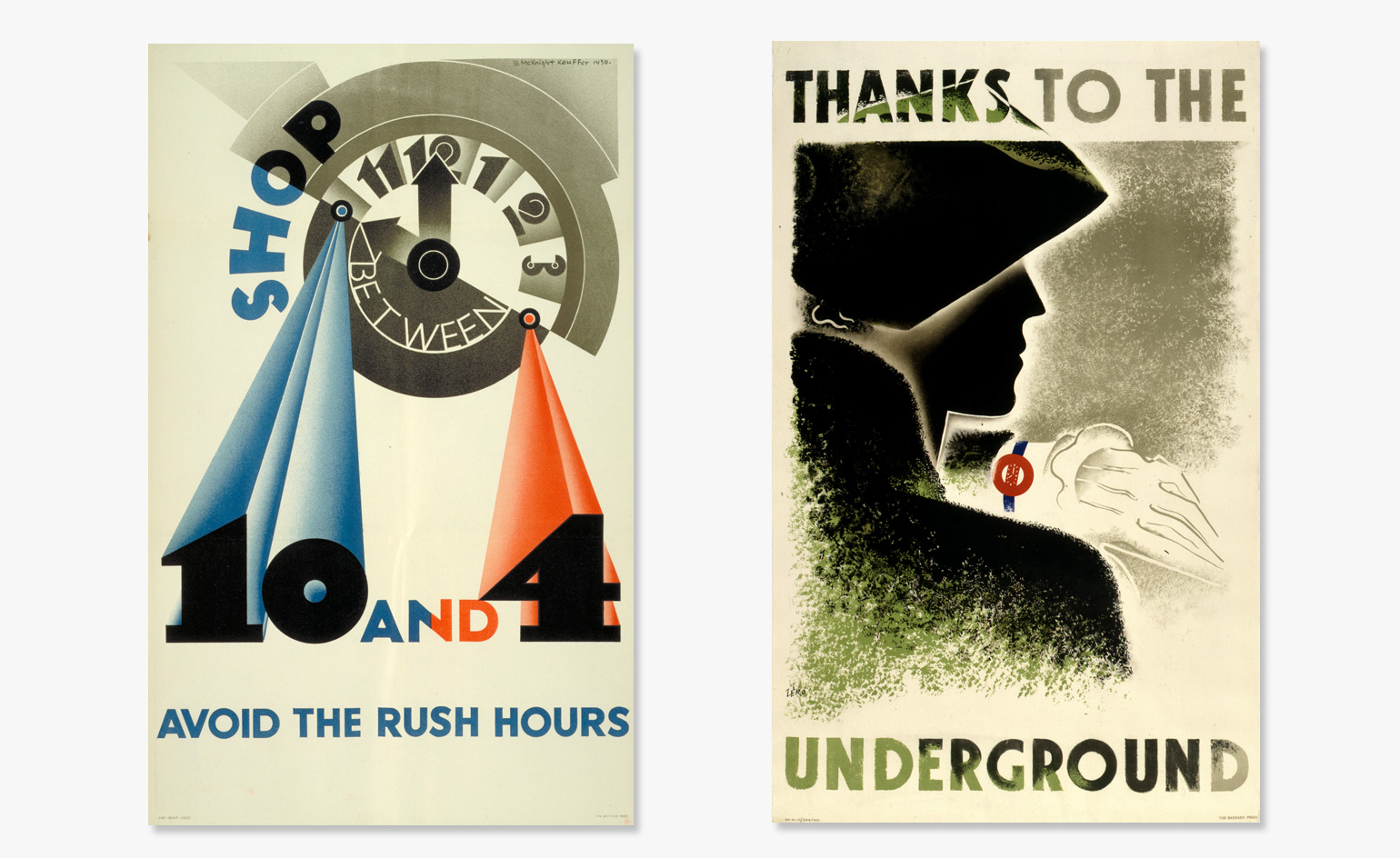
When Pick was given responsibility for London Underground's publicity in 1908, he recognised the potential of graphic posters and commissioned artists to reinvent TfL’s corporate identity. Pictured left, Shop between 10 and 4, by Edward McKnight Kauffer, 1947. Right, Thanks to the Underground, by Zero (Hans Schleger), 1935. Courtesy of TFL and the London Transport Museum

Left, Underground brings all things nearer, by Dora M Batty, 1932. Right, Edward Johnston's iconic Underground typeface, 1940. Courtesy of TFL and the London Transport Museum
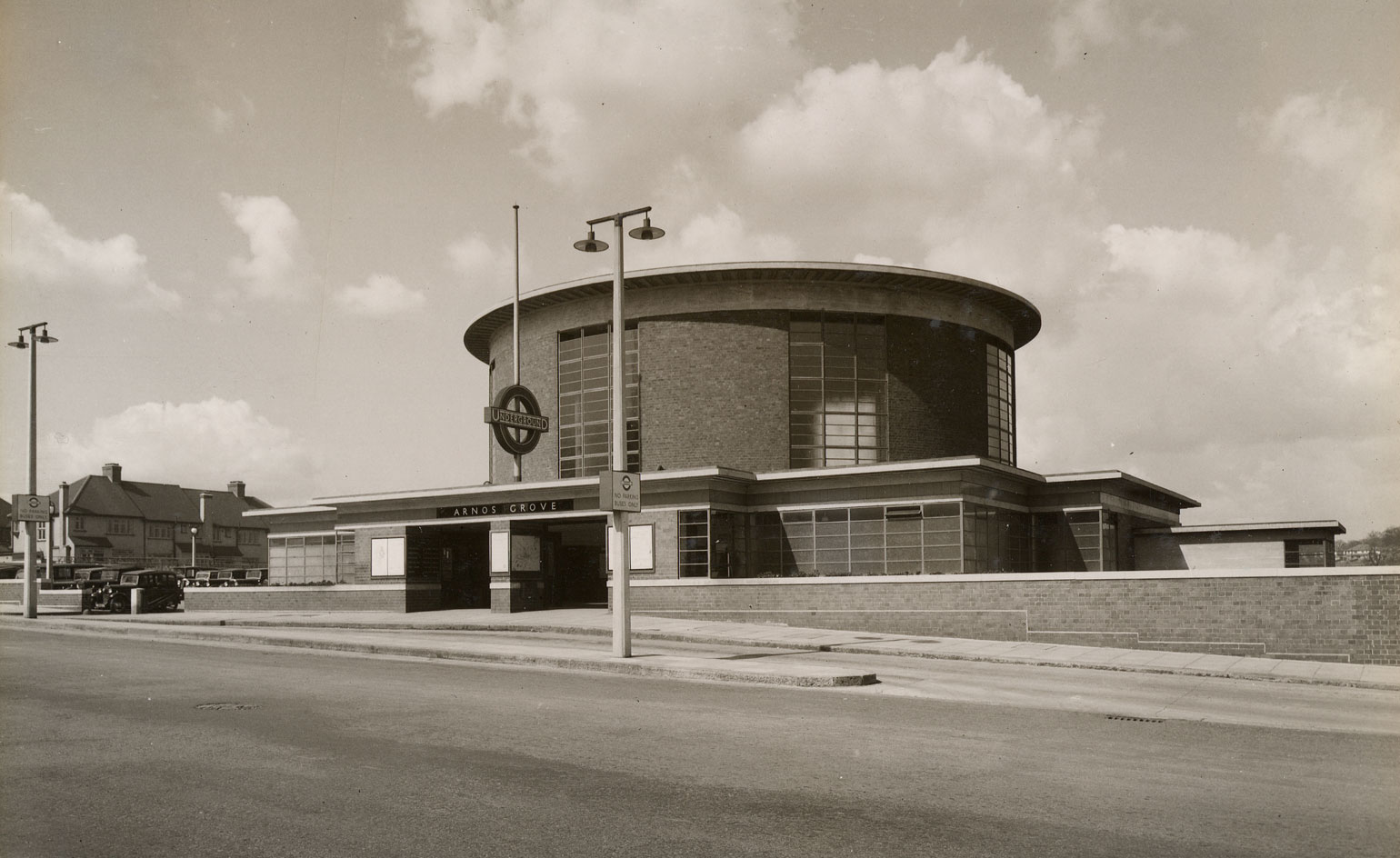
Built in 1935, the Arnos Grove Underground station on the Piccadilly line was designed by architect Charles Holden under the direction of Pick.
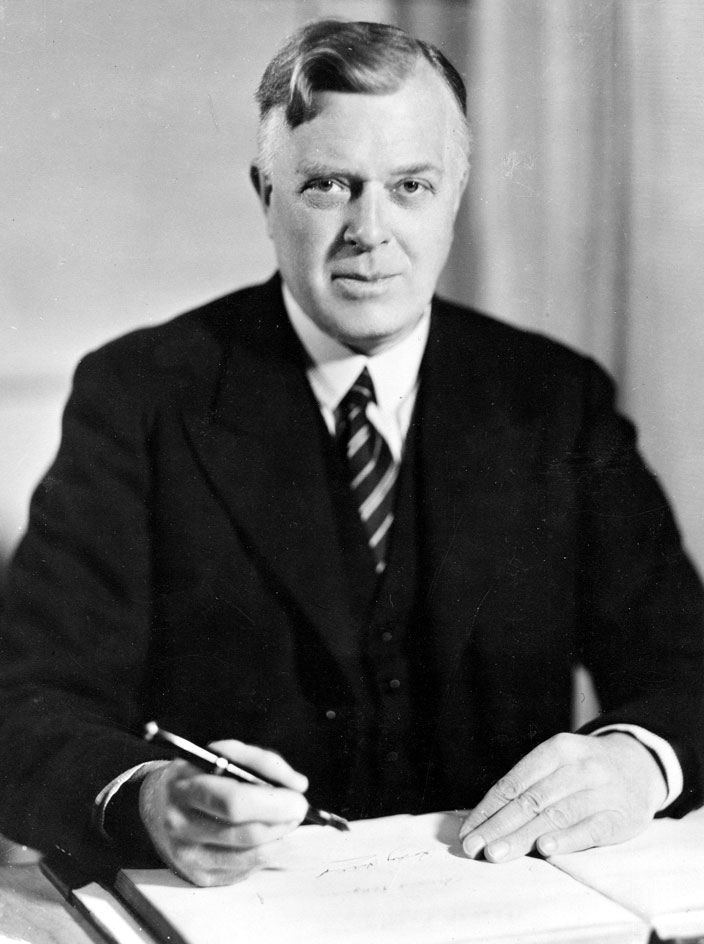
Pick at his desk, 1939. Courtesy of TFL and the London Transport Museum
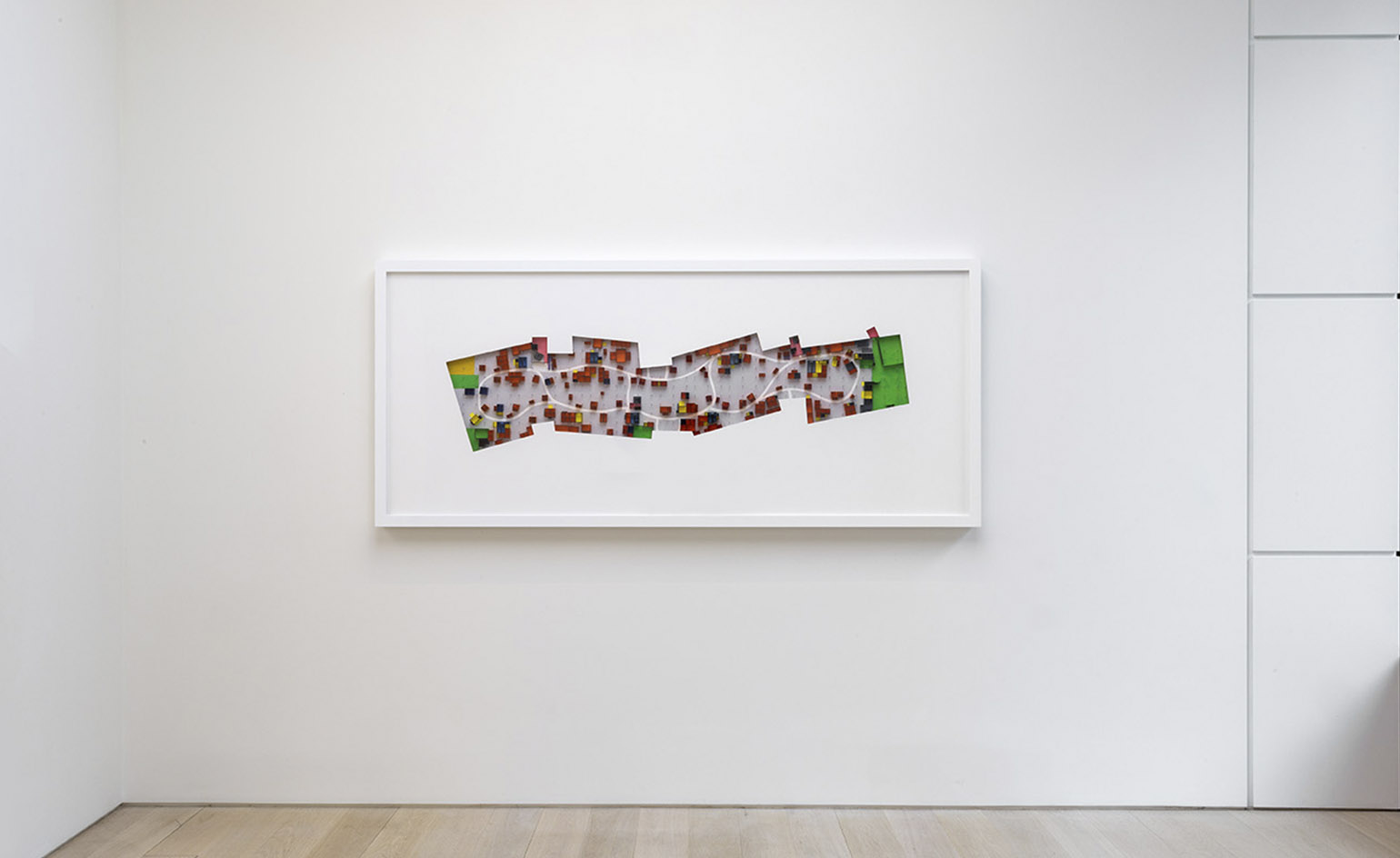
Information
Beauty Immortality is on view at Piccadilly Circus station. For more information, visit the Art on the Underground website
Address
Piccadilly Circus
London W1J 9HP
Wallpaper* Newsletter
Receive our daily digest of inspiration, escapism and design stories from around the world direct to your inbox.
Elly Parsons is the Digital Editor of Wallpaper*, where she oversees Wallpaper.com and its social platforms. She has been with the brand since 2015 in various roles, spending time as digital writer – specialising in art, technology and contemporary culture – and as deputy digital editor. She was shortlisted for a PPA Award in 2017, has written extensively for many publications, and has contributed to three books. She is a guest lecturer in digital journalism at Goldsmiths University, London, where she also holds a masters degree in creative writing. Now, her main areas of expertise include content strategy, audience engagement, and social media.
-
 ‘Humour is foundational’: artist Ella Kruglyanskaya on painting as a ‘highly questionable’ pursuit
‘Humour is foundational’: artist Ella Kruglyanskaya on painting as a ‘highly questionable’ pursuitElla Kruglyanskaya’s exhibition, ‘Shadows’ at Thomas Dane Gallery, is the first in a series of three this year, with openings in Basel and New York to follow
By Hannah Silver
-
 Australian bathhouse ‘About Time’ bridges softness and brutalism
Australian bathhouse ‘About Time’ bridges softness and brutalism‘About Time’, an Australian bathhouse designed by Goss Studio, balances brutalist architecture and the softness of natural patina in a Japanese-inspired wellness hub
By Ellie Stathaki
-
 Marylebone restaurant Nina turns up the volume on Italian dining
Marylebone restaurant Nina turns up the volume on Italian diningAt Nina, don’t expect a view of the Amalfi Coast. Do expect pasta, leopard print and industrial chic
By Sofia de la Cruz
-
 ‘Humour is foundational’: artist Ella Kruglyanskaya on painting as a ‘highly questionable’ pursuit
‘Humour is foundational’: artist Ella Kruglyanskaya on painting as a ‘highly questionable’ pursuitElla Kruglyanskaya’s exhibition, ‘Shadows’ at Thomas Dane Gallery, is the first in a series of three this year, with openings in Basel and New York to follow
By Hannah Silver
-
 Artist Qualeasha Wood explores the digital glitch to weave stories of the Black female experience
Artist Qualeasha Wood explores the digital glitch to weave stories of the Black female experienceIn ‘Malware’, her new London exhibition at Pippy Houldsworth Gallery, the American artist’s tapestries, tuftings and videos delve into the world of internet malfunction
By Hannah Silver
-
 Ed Atkins confronts death at Tate Britain
Ed Atkins confronts death at Tate BritainIn his new London exhibition, the artist prods at the limits of existence through digital and physical works, including a film starring Toby Jones
By Emily Steer
-
 Tom Wesselmann’s 'Up Close' and the anatomy of desire
Tom Wesselmann’s 'Up Close' and the anatomy of desireIn a new exhibition currently on show at Almine Rech in London, Tom Wesselmann challenges the limits of figurative painting
By Sam Moore
-
 A major Frida Kahlo exhibition is coming to the Tate Modern next year
A major Frida Kahlo exhibition is coming to the Tate Modern next yearTate’s 2026 programme includes 'Frida: The Making of an Icon', which will trace the professional and personal life of countercultural figurehead Frida Kahlo
By Anna Solomon
-
 A portrait of the artist: Sotheby’s puts Grayson Perry in the spotlight
A portrait of the artist: Sotheby’s puts Grayson Perry in the spotlightFor more than a decade, photographer Richard Ansett has made Grayson Perry his muse. Now Sotheby’s is staging a selling exhibition of their work
By Hannah Silver
-
 Celia Paul's colony of ghostly apparitions haunts Victoria Miro
Celia Paul's colony of ghostly apparitions haunts Victoria MiroEerie and elegiac new London exhibition ‘Celia Paul: Colony of Ghosts’ is on show at Victoria Miro until 17 April
By Hannah Hutchings-Georgiou
-
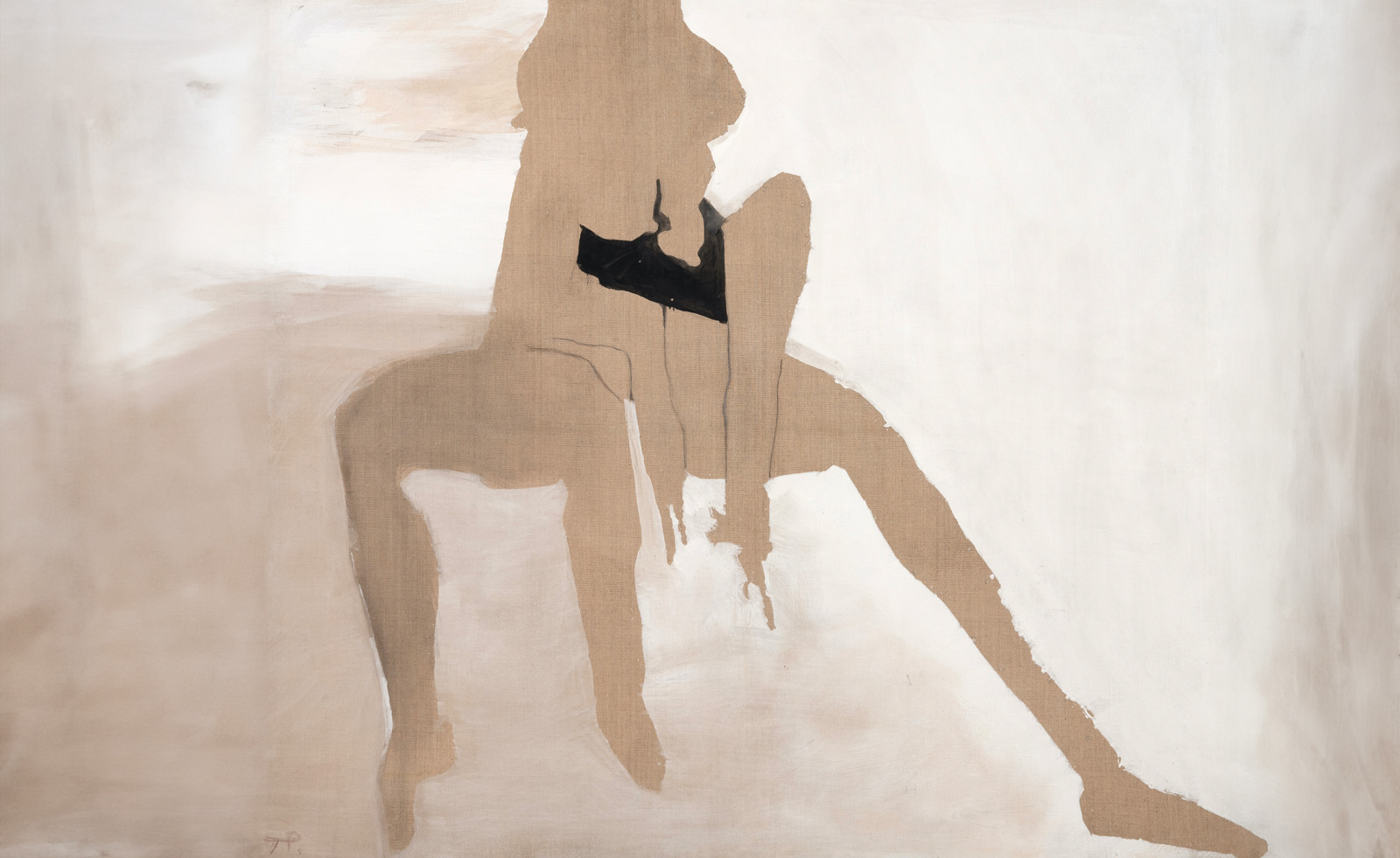 Teresa Pągowska's dreamy interpretations of the female form are in London for the first time
Teresa Pągowska's dreamy interpretations of the female form are in London for the first time‘Shadow Self’ in Thaddaeus Ropac’s 18th-century townhouse gallery in London, presents the first UK solo exhibition of Pągowska’s work
By Sofia Hallström